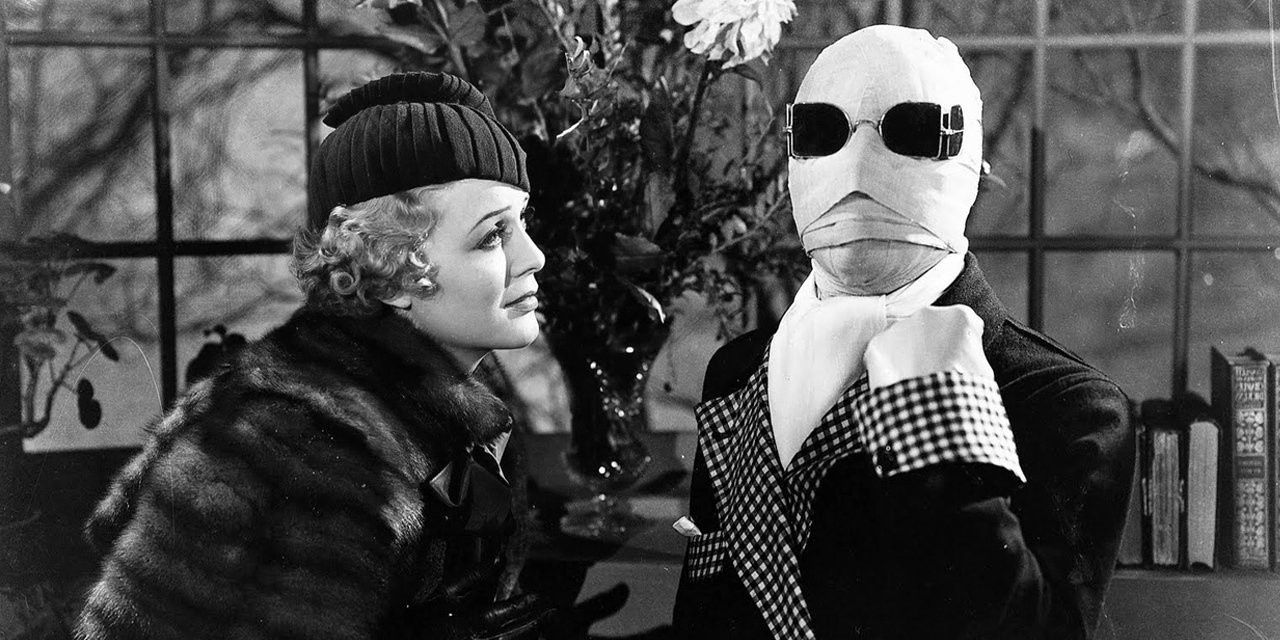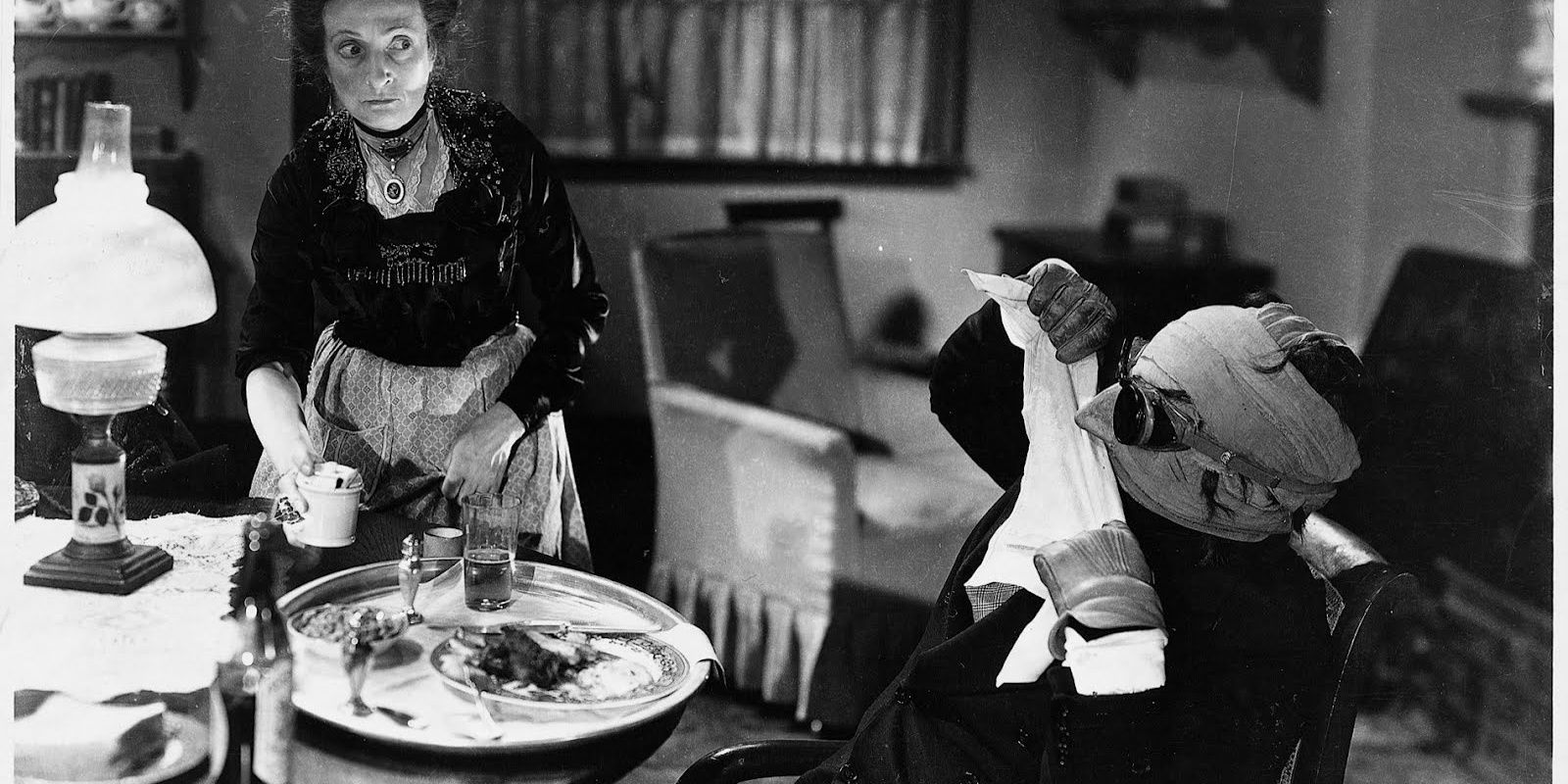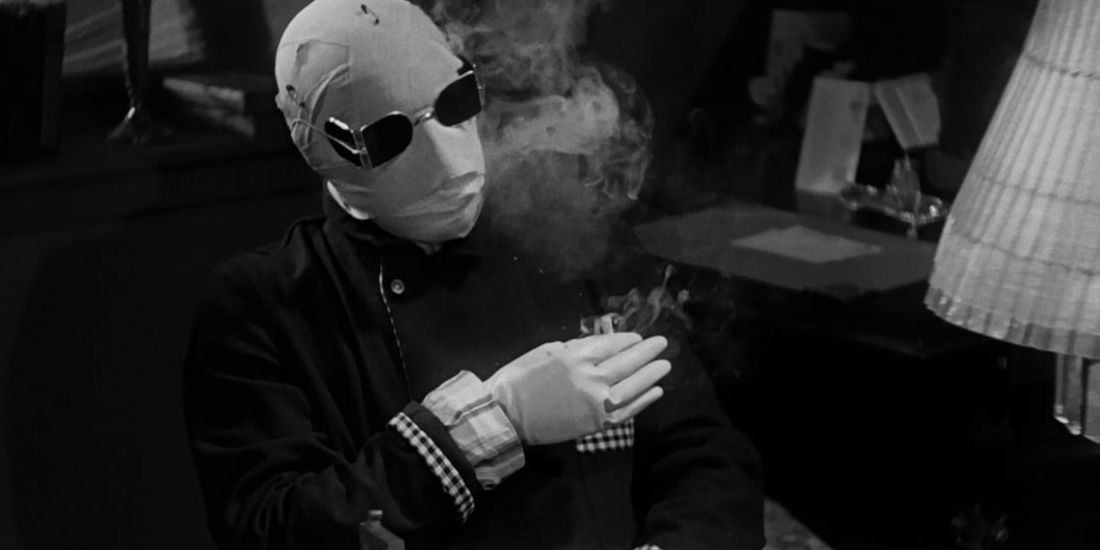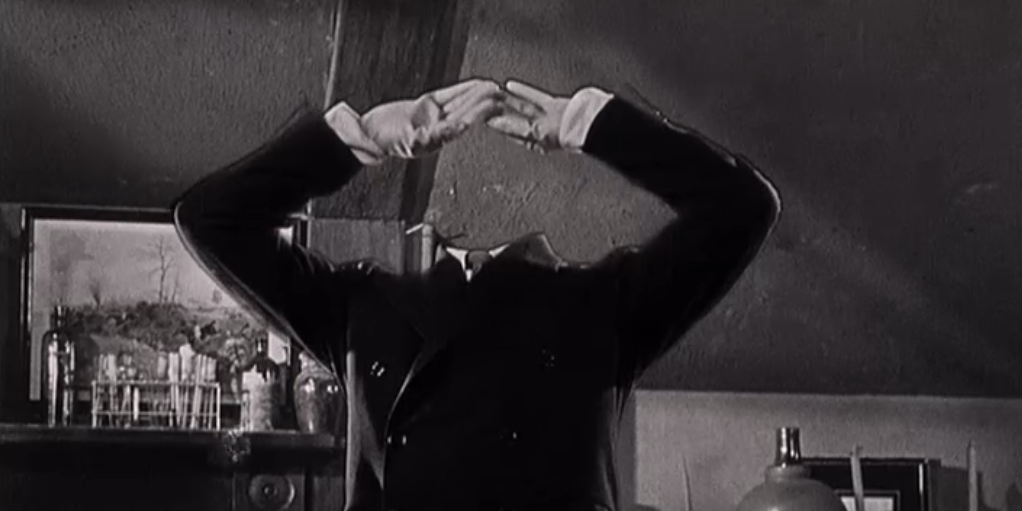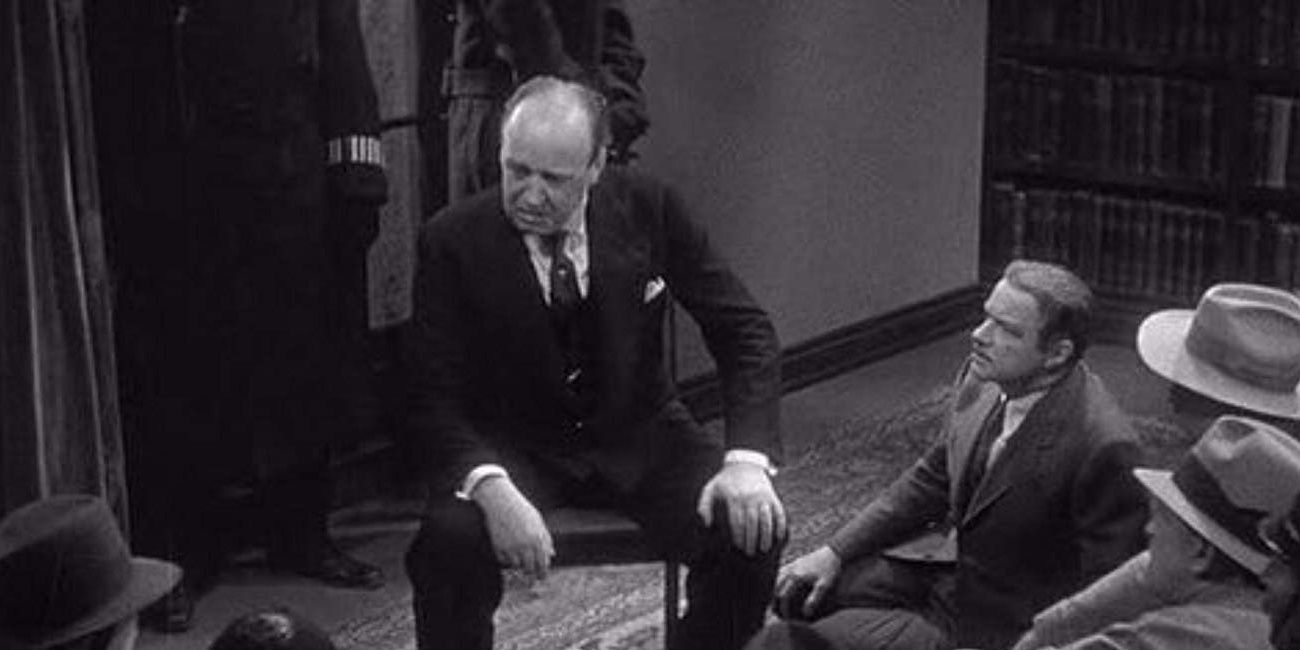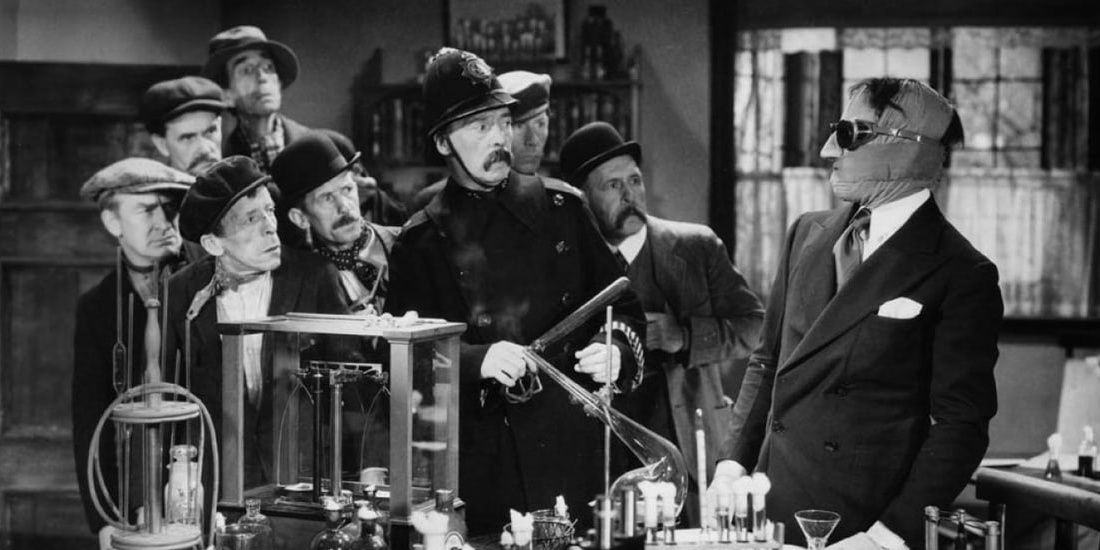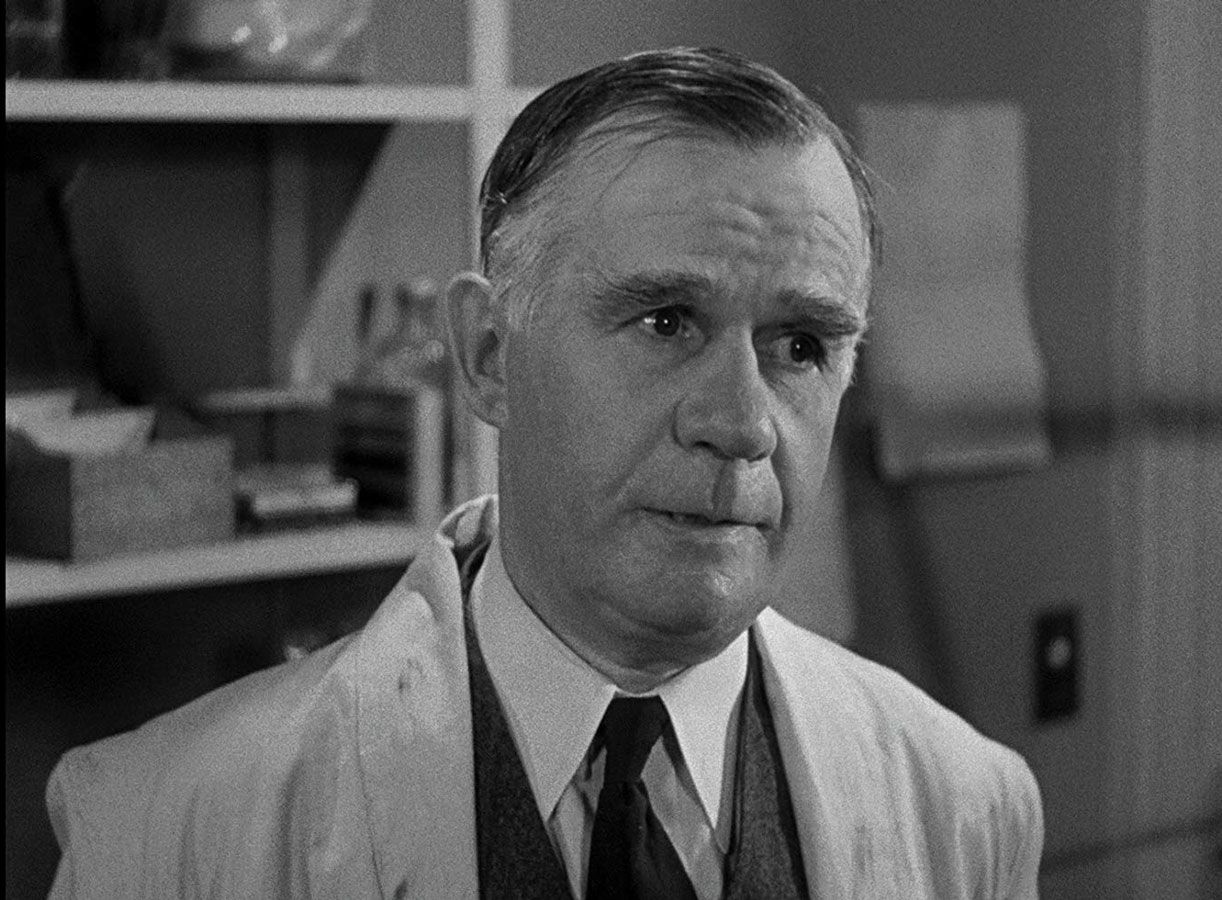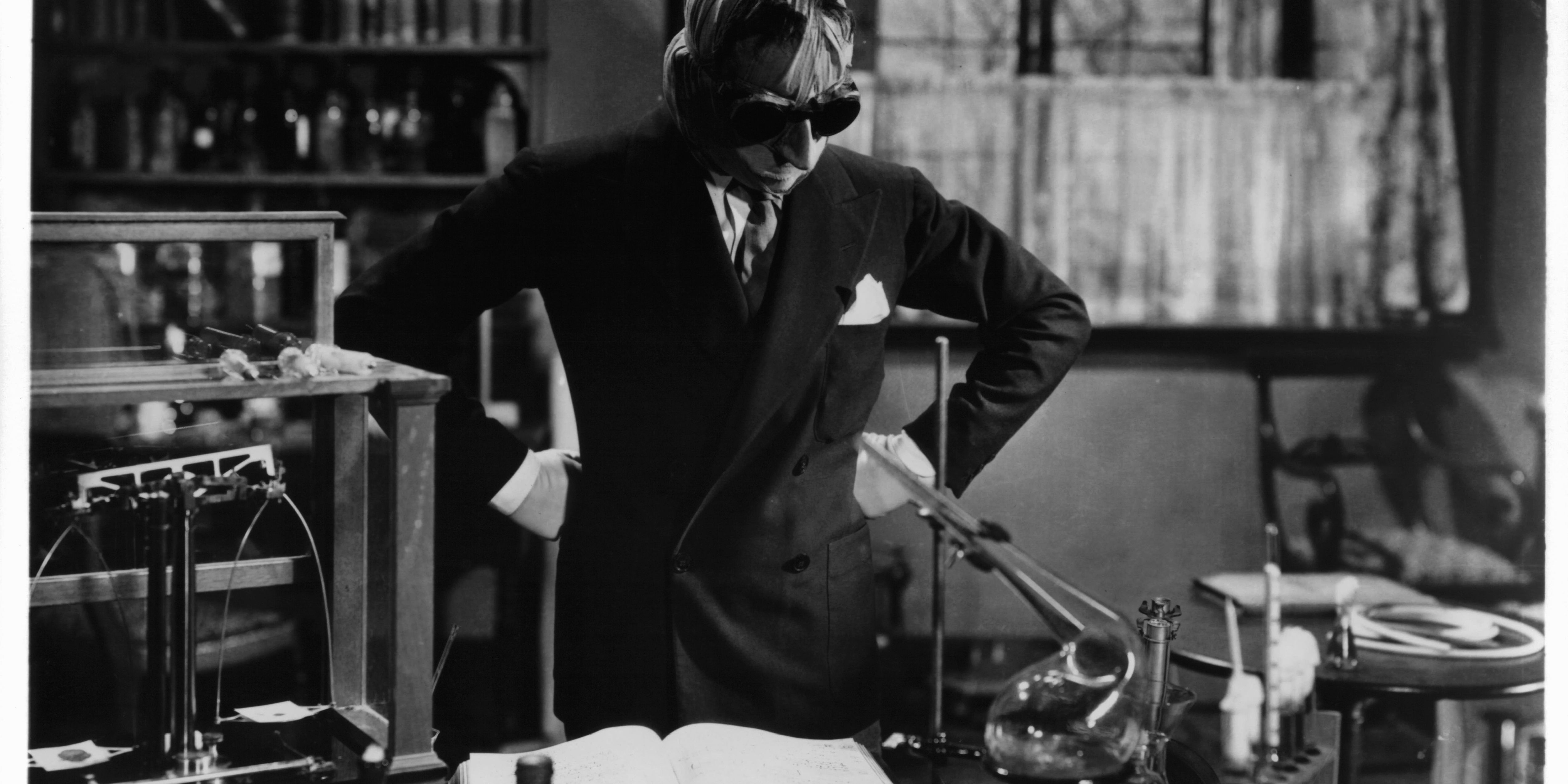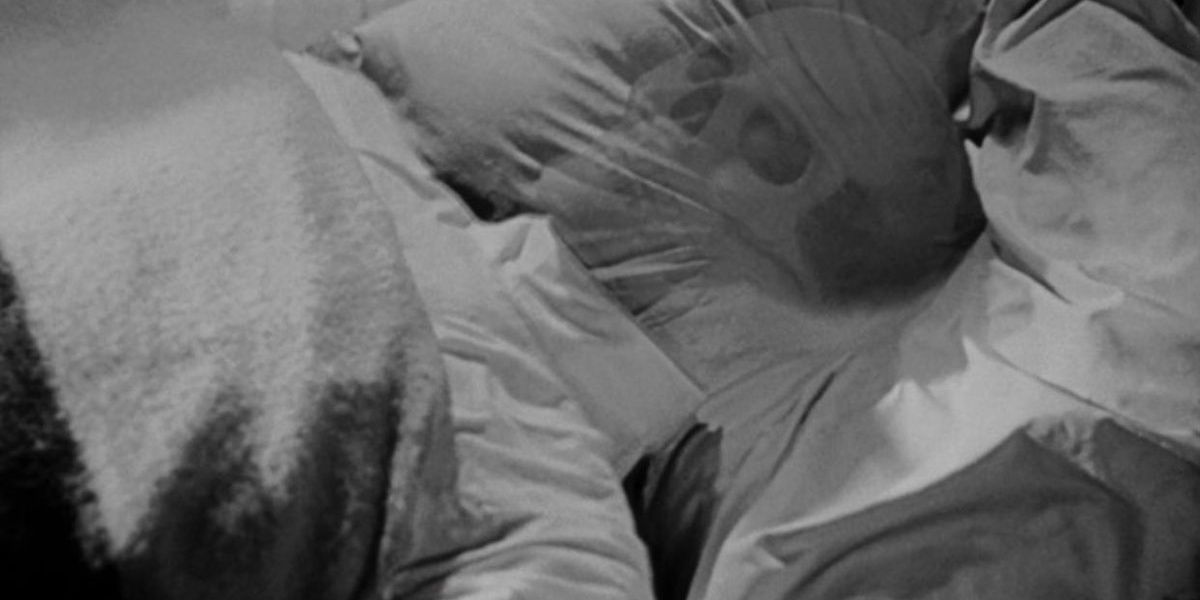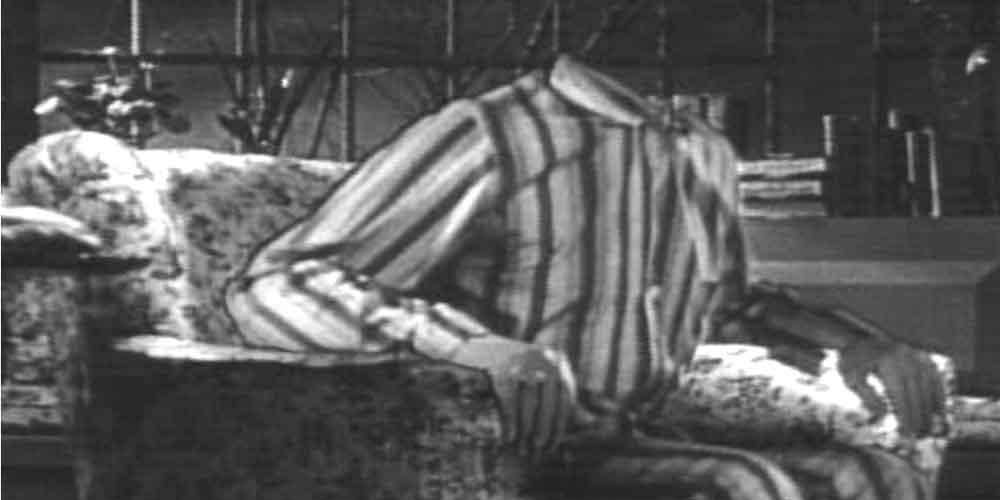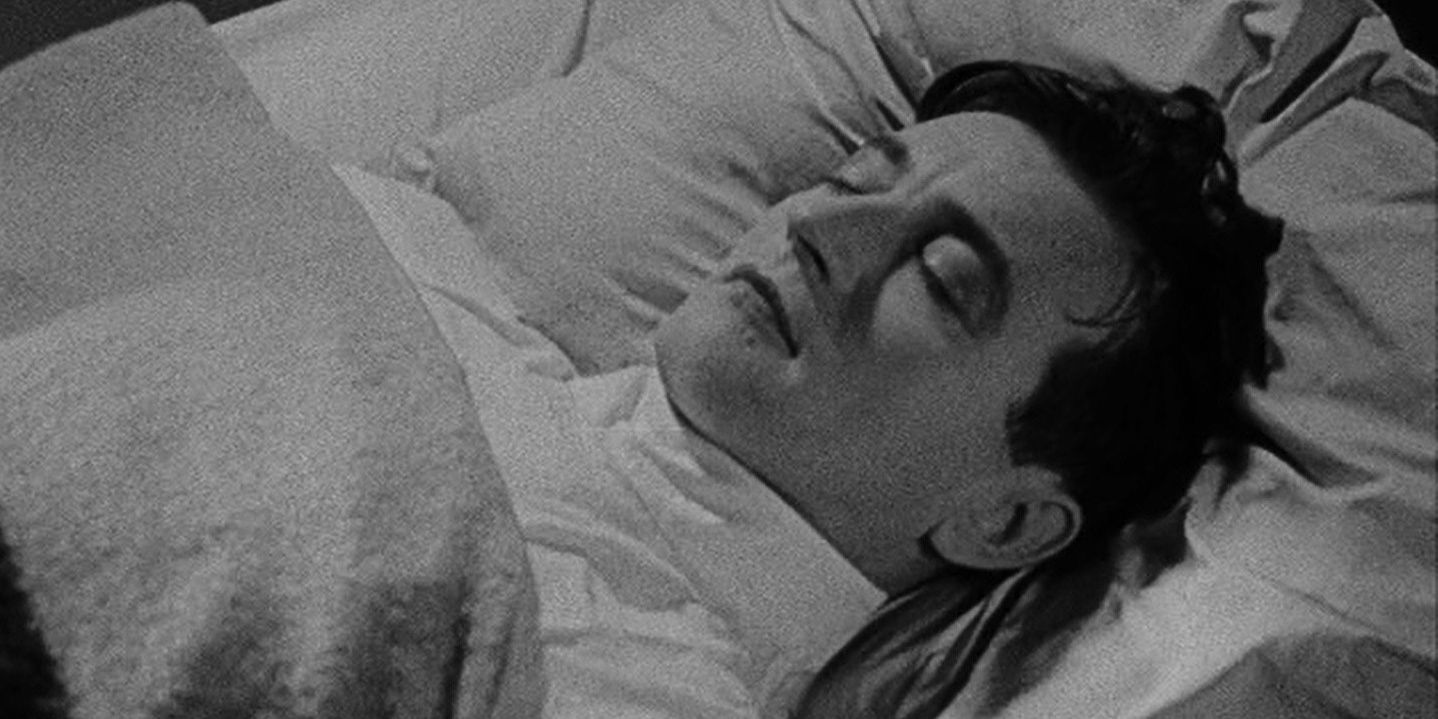The Invisible Man is one of the undisputed Universal monster movies. It's definitely an oddball out of the bunch because it draws from sci-fi and, some would argue, may not even be technically horror. However, whatever way one decides to look at it, it's still an undisputed masterpiece. Released in 1933, and starring a young Claude Rains in his first appearance in American cinema, it was an absolutely stunning adaptation of famed sci-fi author H.G. Wells' 1897 novel. People have called it "a nearly perfect translation of the spirit of the book."
That said, there were tons of spin-offs, sequels, and transmutations of this classic work. It appears as though Universal intends to follow in those footsteps soon, with a reboot as part of their Universal monsters reboot universe. Since it's already been modified dozens of times, some changes may be required. Let's have a look at those now.
Keep: The Location Setting
The original Invisible Man takes place in England, inside a small, quaint village. It also takes place contemporaneously with the release of the film, roughly set in the early 1930s. While some fans would like to see an update that takes place in our modern-day, there have been many wonderful period-pieces out lately, especially in the horror genre. A specific luminary of this new trend is Robert Eggers, who released stunning films such as The VVItch and The Lighthouse. Obviously those aren't the only period pieces to be released lately, but they are shining examples. A capable director such as he could create something so foreign and alien for modern viewers that the film would be outstanding compared to the flop that was The Mummy.
Keep: His Manic Personality
Griffin, our main character played by Claude Rains is absolutely mad. He doesn't realize that when he creates the tincture that allows him to become invisible, it has an unwanted side-effect of rendering the user completely insane. There had been other literature published on the chemical compound he used, called monocane. In these pieces, the true nature of the drug is revealed, instead of only listing its virtues of bleaching. If Griffin had known this, he would have been more careful, instead of engaging in a murder spree in an attempt to take over the world. I suppose however that it couldn't have made for quite as exciting a story though.
Keep: A Lack Of Graphic Violence
It's very easy when making a horror movie to rely on graphic violence, jump-scares, and musical cues to scare the viewer. This does have its merits since these can be very effective tools in the hands of a competent director. However, one of the things that made the original film so good and so disturbing is that there is really only ever the implication of violence and then the confirmation that it happened after the fact. Rarely do we see anything that could be construed as an onscreen death. Given this use of subtlety, the viewer would come away with a much more psychologically haunting experience.
Keep: The Police Procedural Vibes
In the original film, most of Griffin's conflicts aren't internal. He has absolutely no qualms about being the madman he's shown to be. His real problems start when the police and nosy innkeepers start to think that maybe it isn't just cold outside. Maybe the bandages he wears aren't due to injury. Maybe they're a blind for the more sinister truth lurking under the surface. When he's having his room investigated and they find lab equipment, it's not so difficult to imagine someone like David Fincher in the director's chair, who's brought us classics like Mindhunter, Se7en, and Zodiac.
Keep: The Dangers Of Science Theme
Something that The Invisible Man brings to the table which is echoed in its contemporary Frankenstein is its general distrust of the scientific method, which is almost a Universal for the sci-fi genre (pun intended). In Frankenstein, the main conflict is man vs. world or, in a strange way, man vs. God since Frankenstein's monster is battling with his creator, Dr. Victor Frankenstein.
While we don't quite have the latter at play here, we do have a man vs. technology struggle happening. Without the mad science that Griffin was engaged in, we wouldn't have gotten ourselves into this problem in the first place. The whole film has an air of the warning that there are some things that mankind shouldn't be meddling in.
Change: The Science
It's no secret that when the novel was written in 1897 and the film was directed in 1933, science wasn't quite as developed as it is now. So it's no big leap to assume that some of the film's science isn't quite up to snuff. For instance, in one scene we see Griffin applying monocane to his eyes so he isn't just a pair of floating retinas. This wouldn't work, however, considering A) applying bleach to his eyes would cause blurred vision, and B) the eye needs these pieces to function.
Change: The Ending Science
At the end of the film, we see that Griffin dying in bed. As he fades from life after uttering the oh-so-preachy phrase "I meddled in things that man must leave alone," he returns to full visibility. If Monocane really is just an incredibly effective bleach as the film postulates, then he shouldn't become visible again or anything like that. It might be said that this lends a slightly more poetic visual element to the film, it really just doesn't follow from the movie's mechanics.
Change: The Ending In General
The ending is obviously taking a stance on technology as a whole, what we as humans can know, what we should know etc. The stance it takes though, really doesn't work for Griffin's character. Griffin is an absolute madman, yet he has the mental energy and presence of mind to understand that he really shouldn't have done what he has. Generally, sociopaths such as Griffin don't feel any kind of remorse for these things.
Change: Special Effects
The special effects in this film are absolutely ingenious, but since it is a reboot—regardless of whether it's a period piece or not—they're going to have to change a few things to make it look believable for modern audiences.
While this hopefully won't mean a ridiculous amount of CGI, it's certain that there are some updates needed. Green-screen technology will be a must-have, instead of just the black velvet suit on black velvet background that was originally used.
Change: Griffin's Personality
Griffin in the novel isn't a completely anti-social person like he is in the film. Instead, he's engaged and has a family with which he interacts. In the movie, he's merely a drifter with one past acquaintance that he exploits for his own ends. In the book, he's already mad and hungry for power before even using the serum he invents. This hunger for power is what drives him to create it in the first place. The best bet for the reboot is to blend the elements that have been so kindly provided by the filmmakers and H.G Wells into a synthesis and, hopefully, create a more complete image of the character.

